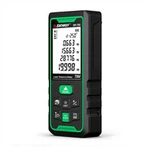Wind Direction Anemometer Uncertainties and Correction Methods
With the changes of the times, anemometers have developed rapidly. New instruments are used in various industries in China, especially for predicting national meteorology and oceans, which is an important task. In order to ensure the reliability data measurement of anemometers has traceability and quality assurance, instrument calibration must be carried out, especially under dynamic conditions, in wind tunnels.
The uncertainty of the wind direction and speed meter should include the uncertainty of the measurement results of the standard instrument composed of a second-class standard pitot static pressure tube and a micro pressure gauge, the uncertainty caused by the instability and non-uniformity of the airflow in the wind tunnel, and the uncertainty of the device.
Calibration Method for Wind Direction and Anemometer
(1) Only wind direction and speed meters that pass the appearance inspection can be calibrated as follows.
(2) The installation position and requirements of pitot tubes and anemometers in wind tunnel calibrators: The total pressure hole of the pitot tube should be aligned with the direction of the airflow, the axis of the pitot tube probe should be (25 ± 5) mm away from the working section wall, and the pitot tube support rod should be installed vertically and firmly on the working section wall of the wind tunnel.
The protective layer of the anemometer should be strong and uniform during application, without delamination or obvious defects such as rust. The installation and use should be strictly in accordance with the requirements of the user manual to avoid increasing data errors. The application of anemometers in agricultural production plays an important role in early prevention and protection of crops.






